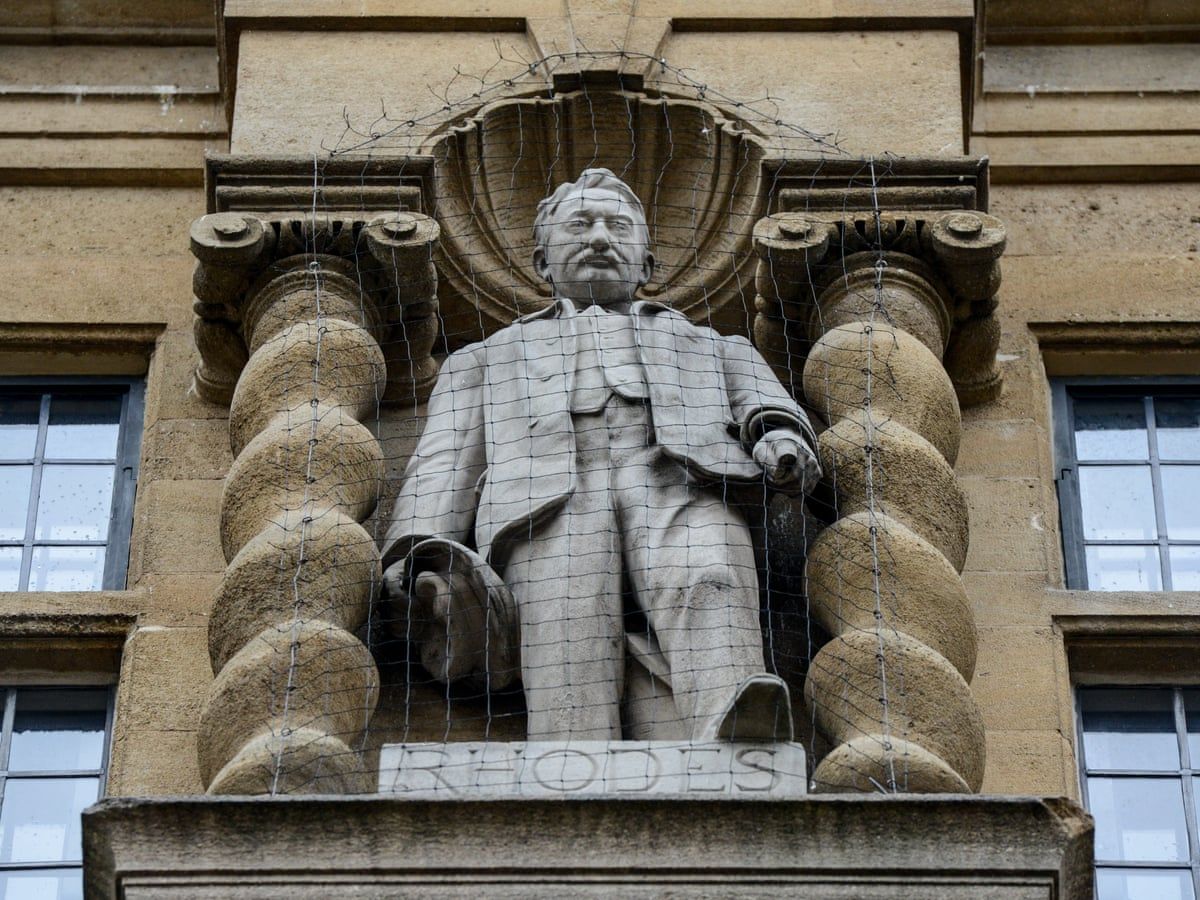Oriel College says it has no plans to “begin the legal process for relocation” of the statue of British imperialist Cecil Rhodes following a report by an independent commission which recommended that the college should “now invest in understanding and contextualisation of its relationship with Rhodes”.
The commission, chaired by Carole Souter, was set up last year to assess the fate of the contentious sculpture by Henry Alfred Pegram which stands on the façade of the Oxford University college. According to the commission report, “in respect of the future of the Rhodes statue, a majority of commission members supported the expressed wish of the governing body to remove it”.
The lengthy list of recommendations put forward by the commission include agreeing a plan for “improving educational equality, diversity and inclusion within the college”. Crucially, it stresses that “if the statue and plaque are moved they could be relocated inside the college to a less prominent position”. However, it has rowed back on making any firm recommendations regarding removing the sculpture.
Oriel’s governing body says in a statement that it has “carefully considered the regulatory and financial challenges, including the expected time frame for removal, which could run into years with no certainty of outcome, together with the total cost of removal”.
Instead, “it is determined to focus its time and resources on delivering the report’s recommendations around the contextualisation of the college’s relationship with Rhodes,” and has agreed to establish a task force to consider the recommendations contained in the report.
It plans, for instance, to “commission a virtual exhibition to provide an arena for contextualisation and explanation of the Rhodes legacy”. It will also fundraise for scholarships to support students from Southern Africa and “provide additional training for academic and non-academic staff in race awareness”.
Neil Mendoza, the provost of Oriel College, says in a statement: “We understand this nuanced conclusion will be disappointing to some, but we are now focused on the delivery of practical actions aimed at improving outreach and the day-to-day experience of BME students. We are looking forward to working with Oxford City Council on a range of options for contextualisation.”
However last June, the governing body voted in favour of removing the statue of Rhodes (the college launched the independent commission into the "key issues " surrounding the contentious work at the same time). The governing body said in a statement that they "expressed their wish to remove the statue of Cecil Rhodes and the King Edward Street Plaque [commemorating where Rhodes lived in 1881]. This is what they intend to convey to the independent commission of inquiry."
Dan Hicks, a curator at the Pitt Rivers Museum and professor of contemporary archaeology at the University of Oxford, says that "the terms of reference of Oriel's independent commission of Inquiry did not include making the decision about the removal of the two monuments… the next question is about the technical process and timetable of applying for Listed Building Consent.”
He adds: "Many will wish to hear more about what the college describes as the ‘complex challenges and costs’ associated with this next step. Some may also call for the written submissions received by the Commission to be placed in the public domain, and to receive reassurance that there has not been any interference in this democratic process by politicians.”
The historian David Olusoga tells The Art Newspaper that all of the interventions announced by Oriel are welcome. “The legacy of Rhodes needs to be contextualised and details of what he did in Southern Africa, rather than merely what he said, need to be examined publicly. But the college could have done this at any time,” he adds.
“The lack of contextualisation of Rhodes, like the diversity and inclusion failures of the college and the university could have been addressed years ago. This decision is part of a mindset that presents the addressing of modern-day inequalities as an alternative to addressing the fact that we live in a nation studded with memorials that celebrate the lives of men who committed terrible crimes,” says Olusoga
Campaigners from the Rhodes Must Fall group—inspired by the toppling of the Edward Colston statue in Bristol last year by Black Lives Matter demonstrators—say that the 19th-century politician and diamond mining magnate represents white supremacy and supported apartheid-style measures in South Africa.
But the Save our Statues campaign group, described as a “coalition formed to protect Great Britain’s cultural heritage”, said on Twitter said it “would fight [any decision to remove the Rhodes statue] every step of the way”.


